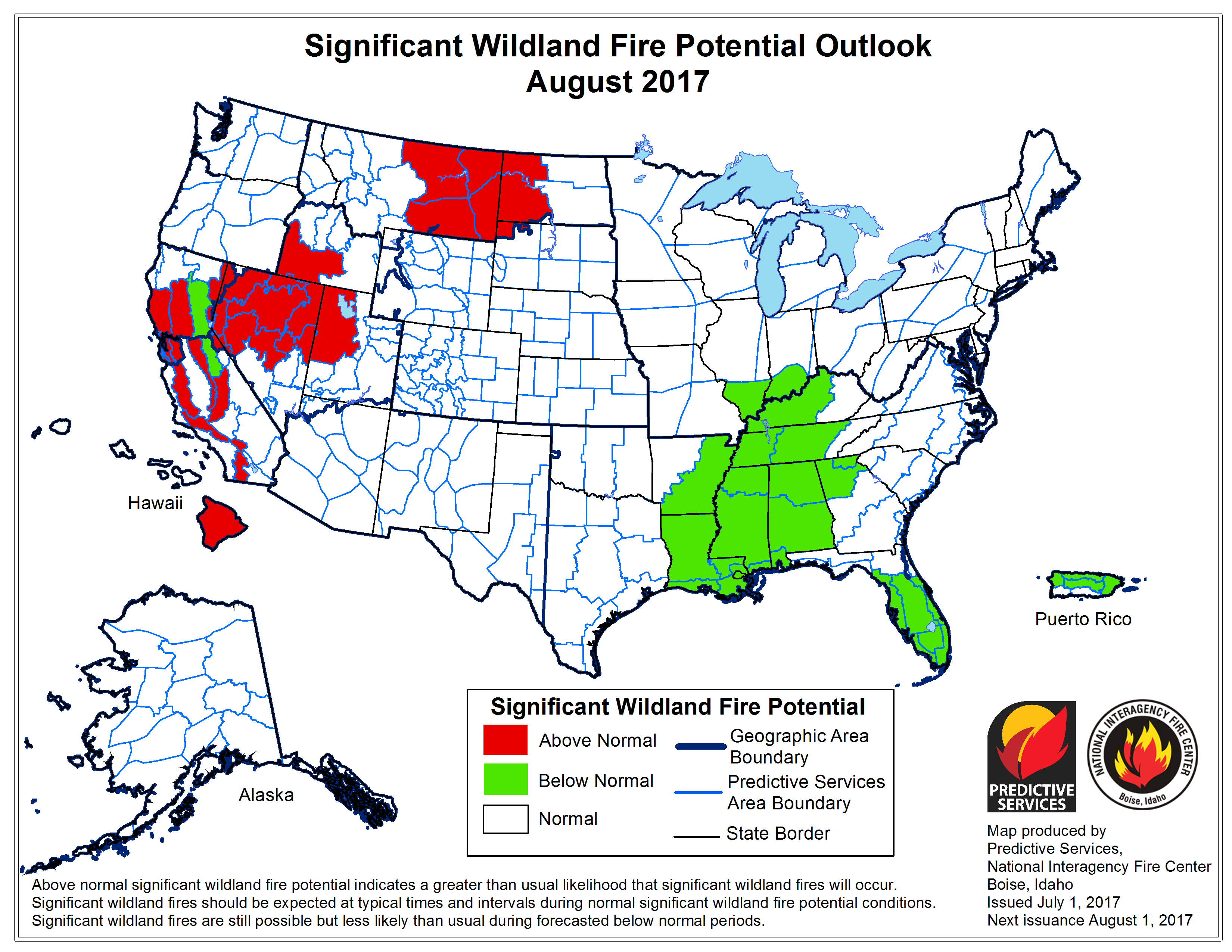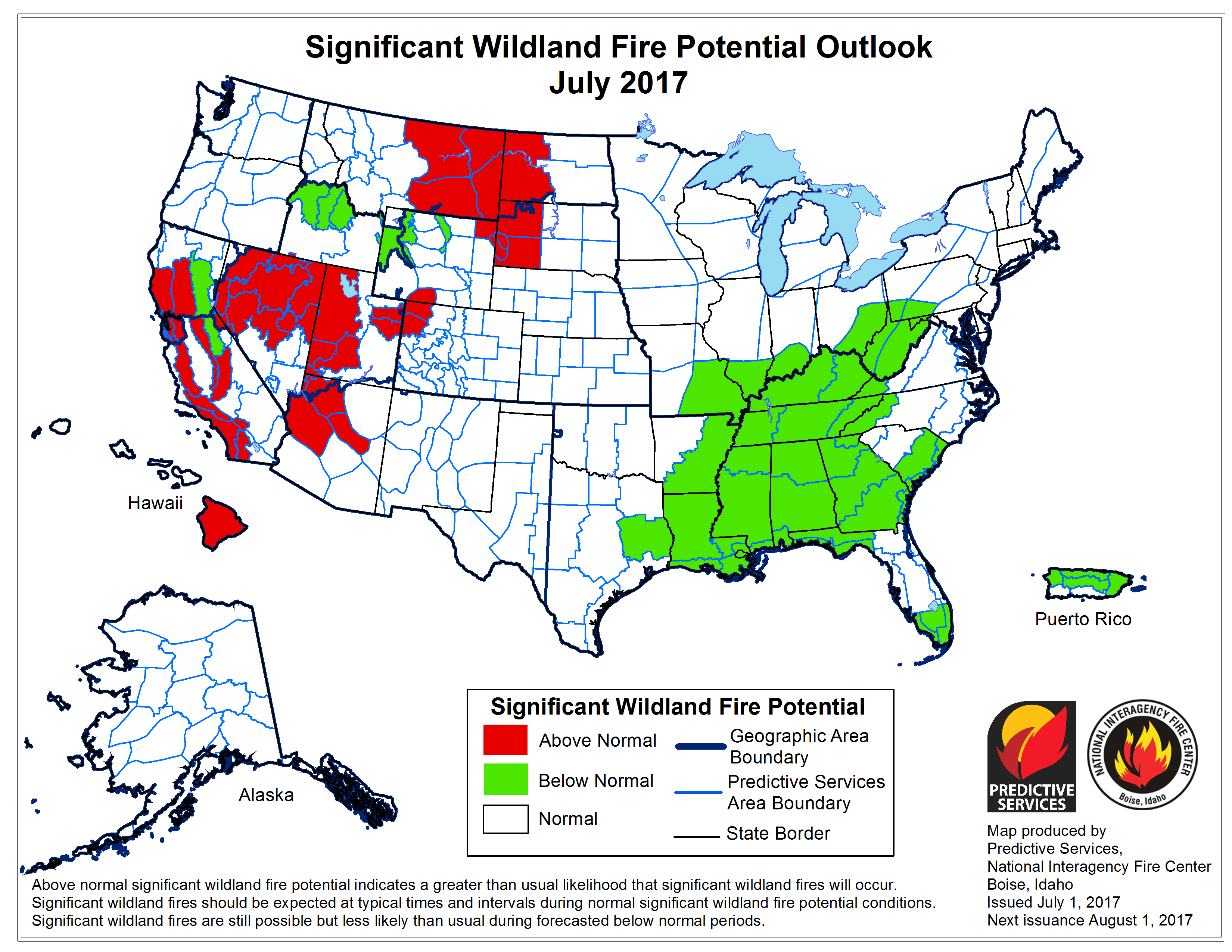According to the National Interagency Fire Center, June 2017 saw record-setting heat events throughout the western United States, while the southeastern wildfire season diminished due to precipitation. The southwestern wildfire season (through Arizona and New Mexico) is expected to end with rains at the end of July, which is typical. However, Southern California will continue to experience wildfire events due to heat and critically dry fuel. The following regional wildfire forecasts for late July and August 2017 are based on predictions and research from the National Interagency Fire Center.

Alaska: Throughout August, fuel dryness and wildfire potential is high in the Upper Yukon Valley and other parts of northern Alaska. Likelihood of wildfires is lower for the second half of the summer than the first half throughout the state. Late-August rains are expected to end fire season.
Northwest: The remainder of July will see typical rainfall and temperatures. Conditions warmer and drier than average will likely occur in August, but significant large wildfire potential will remain normal. Fire potential will start to decline at the end of August.
Northern California + Hawaii: Above average wildfire potential is expected in the San Francisco Bay area, the mountains surrounding the San Joaquin Valley and the western side of Hawaii’s Big Island. Wildfire potential is below normal in the Northern Sierras due to above average precipitation in the spring, and wildfire potential is normal for the east side of the region through August.
Southern California: In July and August, fire potential is higher than expected in the higher elevations of the Sierras and above normal fire potential is expected in the foothills and inner valley areas. Everywhere else has average expected wildfire potential. The high wildfire potentials are due to extended heat waves in June, which may cause critical dryness to be reached by the end of July.
Northern Rockies: Central-eastern Montana and western North Dakota experienced little rain in June, resulting in drought conditions and above average wildfire potential through August. Normal potential is expected in the rest of the region. The entire region will likely experience above average temperatures into September.
Great Basin: Before July, the region experienced weather extremes, with temperature being ± 20 degrees compared to the historical average. The high elevations of Wyoming and Idaho will see below normal wildfire potentials through August, while the lower elevations of Utah and Nevada will see above normal fire potential.
Southwest: Northern Arizona and the Four Corners region is expected to see above average wildfire potential until August, when significant wildfire potential will go back to normal. The rest of the region will see normal wildfire potential through July and August. The summer monsoon season is expected to start on time according to historical data.
Rocky Mountain: After above average June temperatures and precipitation deficits, above normal fire potential will develop through August in western Colorado and parts of North and South Dakota. Normal wildfire potential is expected in the rest of the region, except the mountains of Wyoming, which have lower than normal wildfire potential.
Eastern Area: Normal fire potential is expected in this region through August. Above normal precipitation occurred over the beginning of the summer and will continue through the end of the summer.
Southern Area: Below normal wildfire potential is expected in the majority of the region through August due to high humidity and elevated fuel moisture levels.
For more information on wildfire outlooks and regional wildfire forecasts, visit NICC Predictive Services.




